PHOTOS: Frozen land, forgotten people
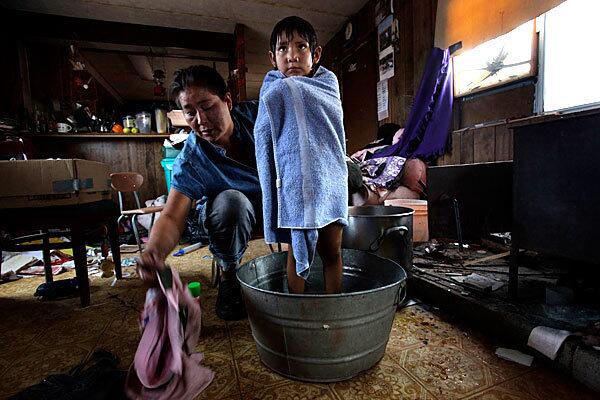
Thomasina Nez gives 4-year-old Bobbi a bath in their trailer, which has no running water: Nez hauls the water from 30 miles away and warms it on a wood stove. She bathes the smallest of her children first, then adds water and bathes the next in line until everyone is clean. (Barbara Davidson / Los Angeles Times)
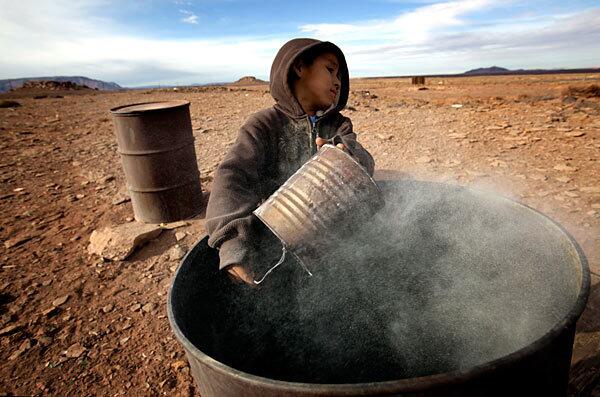
Zeke Whiterock, 6, dumps ash from his family’s wood stove. A Navajo-Hopi land dispute led to a 40-year ban on all upkeep in this section of the Arizona desert. Now the ban has been lifted, but families there are still trapped in deep poverty. (Barbara Davidson / Los Angeles Times)

Zeke, 6, and brother Ashkii, 2, tend the wood stove in the family’s trailer. Taking care of the fire is Zeke’s job since their father’s recent death. (Barbara Davidson / Los Angeles Times)
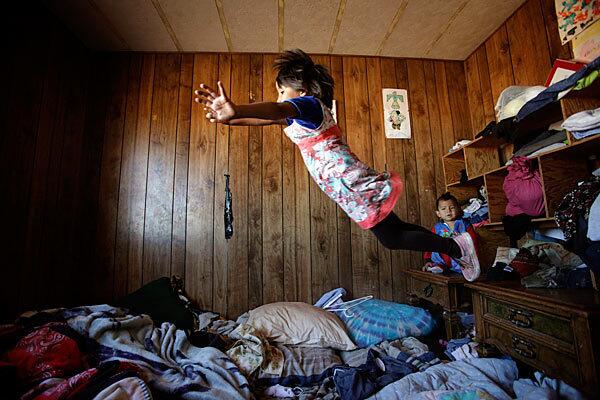
Bobbi Nizhoni Whiterock, 4, leaps off the family dresser and onto the couch cushions where she and four of her siblings sleep. Brother Ashkii, 2, watches. The family can’t afford toys. (Barbara Davidson / Los Angeles Times)
Advertisement
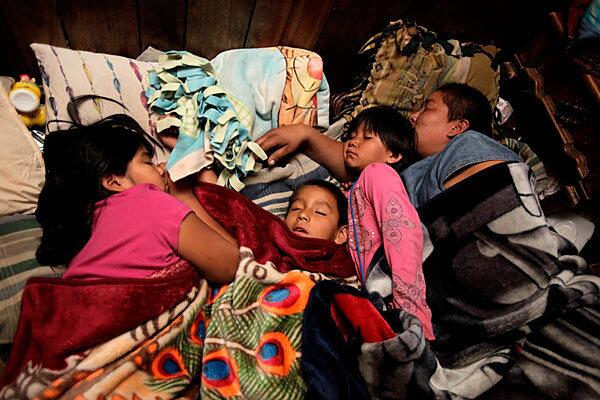
Savannah, 8, Zeke, 6, Bobbi, 4, and mother Thomasina Nez sleep on the floor of their trailer, which has no electricity and is heated by a wood stove. Two of the children go to boarding school during the week, and three others are in boarding school full-time, so they can have three meals a day and access to running water and electricity. (Barbara Davidson / Los Angeles Times)
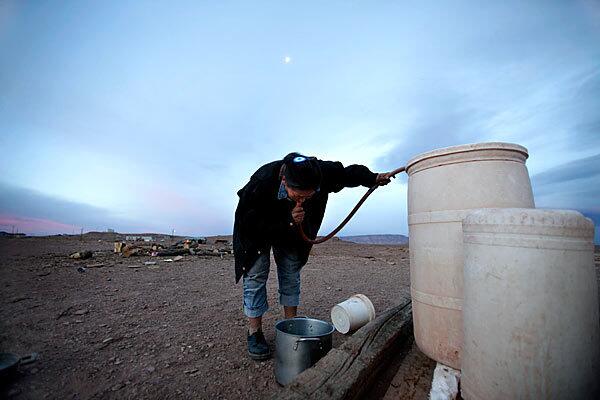
Thomasina Nez tries to siphon frozen water for the children’s baths out of containers lined up beside her trailer. (Barbara Davidson / Los Angeles Times)
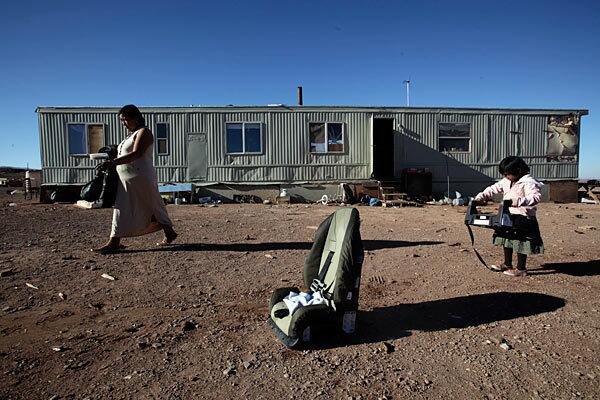
Thomasina Nez and daughter Bobbi, 4, get ready for a drive into Tuba City, the nearest town, about 30 minutes away. A study commissioned by the Navajo found that only 24% of the houses in the area are habitable. (Barbara Davidson / Los Angeles Times)
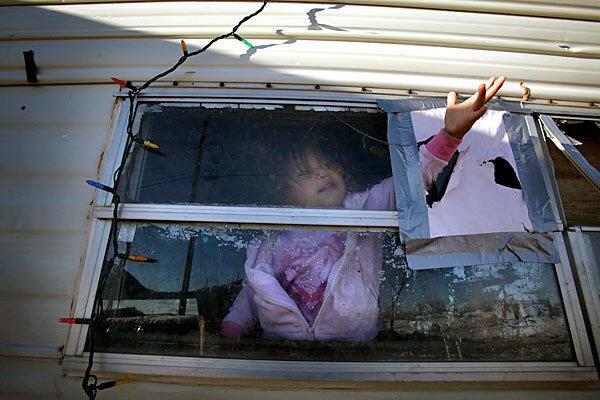
Leticia Zepeda, 2, reaches out of the trailer where she lives with her parents and four siblings. The trailer has no heat or electricity, and the ceiling leaks. (Barbara Davidson / Los Angeles Times)
Advertisement
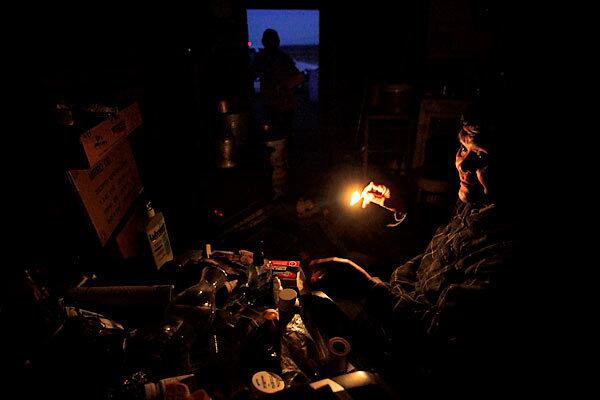
Steven Kerley, a Vietnam veteran who’s been paralyzed since his 20s, lights a match to find his way inside his home. The 40-year ban on development here was hardest on the sick, officials say. (Barbara Davidson / Los Angeles Times)
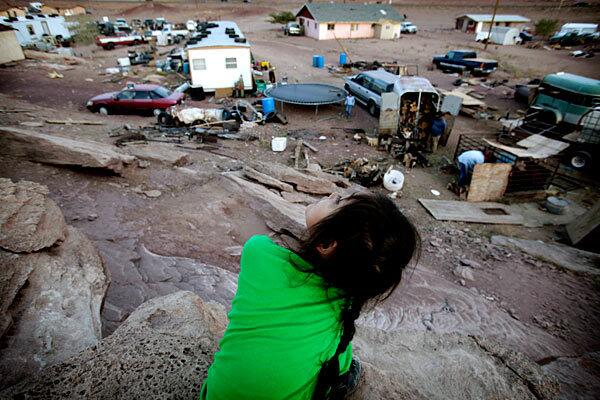
Tlaashchii Gordy, 6, overlooks his family’s home in Cameron, where the family moved after the development ban took effect. (Barbara Davidson / Los Angeles Times)
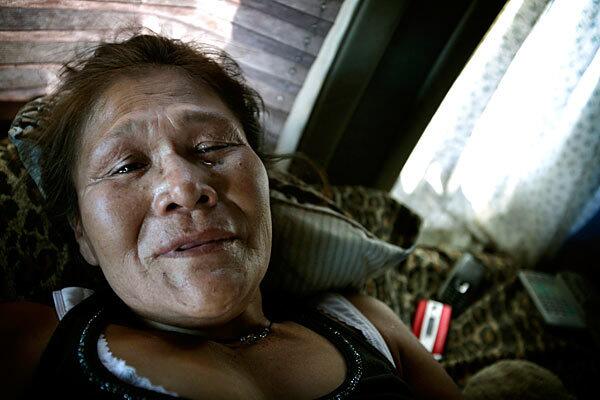
Vera Redell Bennett, 52, who is paralyzed from the waist down, has been living in her van in a Tuba City parking lot for six years. A state caretaker visits daily to bring her food and empty the jug in which she relieves herself. Bennett was told she could not move onto a plot of land near her mother’s home because of the development freeze. “What really makes me sad is when the tribe gives up on its own people,” she said. (Barbara Davidson / Los Angeles Times)
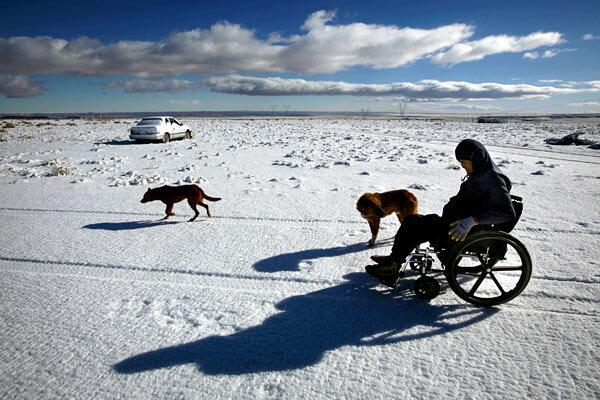
Steven Kerley wheels the 200 feet from his home to his outhouse. (Barbara Davidson / Los Angeles Times)
Advertisement
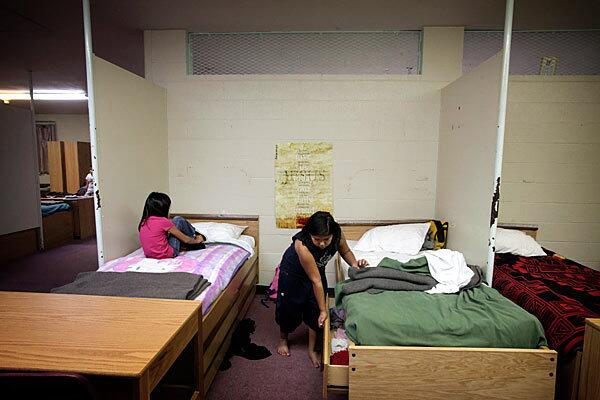
Savannah Whiterock (right), 8, makes her bed at 6:30 a.m. at the boarding school where she lives five days a week. Her brother Zeke, 6, lives there too. It’s a way for the children to get regular meals and sleep warm at night. (Barbara Davidson / Los Angeles Times)







